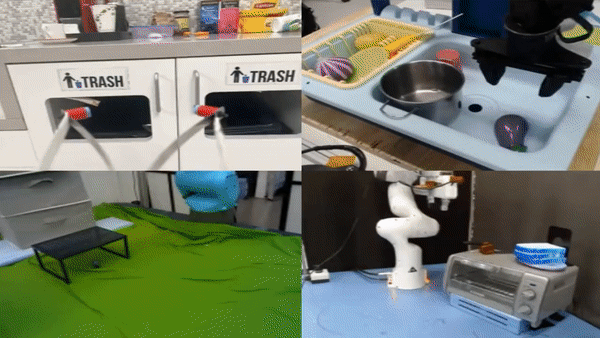The latest advancements in AI and machine learning have shown the effectiveness of large-scale learning from varied datasets in developing AI systems. Despite challenges in collecting comparable datasets for robotics, a team of researchers has proposed X-embodiment training, inspired by pretrained models in vision and language. They have shared the Open X-Embodiment (OXE) Repository, which includes a dataset and tools for further research. The study demonstrates positive transfer and the potential for generalist robotics rules.

The Advancements in AI and Machine Learning
The latest advancements in Artificial Intelligence (AI) and Machine Learning (ML) have shown that large-scale learning from diverse datasets can lead to highly effective AI systems. Pretrained models, in particular, have demonstrated superior performance compared to models trained on smaller, task-specific data. Open-vocabulary image classifiers and big language models have shown great potential in this regard.
Challenges in Collecting Robotics Datasets
However, collecting comparable datasets for robotic interaction is challenging. Unlike computer vision and natural language processing (NLP), where large datasets can be easily accessed from the internet, robotics datasets are often smaller and less diversified. These datasets tend to focus on specific locations, items, or restricted groups of tasks.
Solution: X-Embodiment Training
To overcome these challenges and move towards a massive data regime in robotics, a team of researchers has proposed a solution inspired by the generalization achieved by pretraining large vision or language models on diverse data. They have introduced X-embodiment training, which utilizes data from multiple robotic platforms to develop generalizable robot policies.
The Open X-Embodiment (OXE) Repository
The researchers have shared their Open X-Embodiment (OXE) Repository, which includes a dataset featuring 22 different robotic embodiments from 21 institutions. This dataset contains over 500 skills and 150,000 tasks across more than 1 million episodes. The aim is to demonstrate that policies learned from diverse robots and surroundings can lead to better performance than those trained on a single assessment setup.
Positive Transfer with RT-X Model
The researchers have trained the high-capacity model RT-X on this dataset and found that it shows positive transfer. By leveraging knowledge from various robotic platforms, the model’s training on this broad dataset enhances the capabilities of multiple robots. This suggests that it is possible to create flexible and effective generalist robotics rules for various contexts.
Training Two Models for Robotic Manipulation
The team has used a wide-ranging robotics dataset to train two models: the big vision-language model RT-2 and the effective Transformer-based model RT-1. These models generate robot actions in a 7-dimensional vector format, representing position, orientation, and gripper-related data. They aim to improve robot handling and manipulation of objects and enable better generalization across different robotic applications and scenarios.
Conclusion
The study highlights the potential of combining pretrained models in robotics, similar to the success seen in NLP and computer vision. The experimental findings demonstrate the effectiveness of generalist X-robot strategies in the context of robotic manipulation.
For more information, you can check out the Colab, Paper, Project, and Reference Article.
List of Useful Links:
- AI Lab in Telegram @aiscrumbot – free consultation
- Google DeepMind Releases Open X-Embodiment that Includes a Robotics Dataset with 1M+ Trajectories and a Generalist AI Model (𝗥𝗧-X) to Help Advance How Robots can Learn New Skills
- MarkTechPost
- Twitter – @itinaicom


























